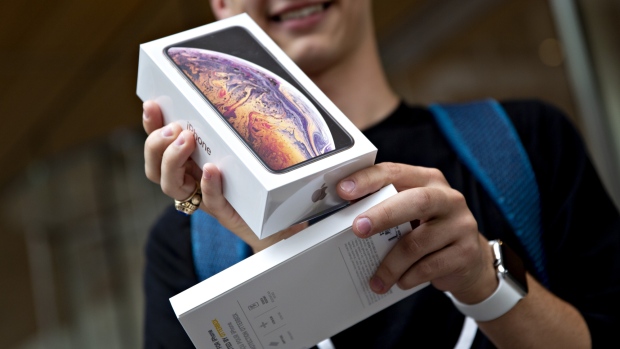Dec 14, 2018
Apple heads to 7-month low as more analysts cut iPhone estimates
, Bloomberg News

Apple Inc. (AAPL.O) fell on Friday, with shares on course to close at their lowest level since April, as more analysts joined the chorus of bears and skeptics warning about the prospects for iPhone sales.
The stock dropped as much as 2.9 per cent, and shares are on track for their 10th negative week of the past 11. At current levels, Apple is down more than 28 per cent from an October record, a collapse that cost the company its title as the largest stock by market capitalization.
DA Davidson cut its price target by US$10 to US$280 on Friday, warning that unit sales in the near term were probably lower than it had initially expected. Separately, according to CNBC, TF International Securities analyst Ming-Chi Kuo cut his first-quarter iPhone shipment estimates by 20 per cent.
The reports are the latest sign that concerns about the iPhone -- by far Apple’s most important product line, comprising more than 60 per cent of its 2018 revenue, according to Bloomberg data -- are growing.
Caution has increased around Apple ever since it reported its fourth-quarter results in early November and said it would stop reporting how many iPhones it sells each quarter, a change that analysts said raised the specter of a “sustained iPhone downturn.” The idea has gained traction in the weeks since, with a number of iPhone suppliers cutting their outlooks.
On Thursday, Piper Jaffray cut its Apple target to US$222 from US$250 and lowered its iPhone unit sales estimates for both 2019 and 2020, warning of weaker international demand. In late November, Cowen calculated that first-quarter iPhone sales could be down 15 per cent from the prior year, while Guggenheim warned that rising average selling prices were “no longer enough” to offset falling unit sales. Goldman Sachs cut its price target three times in November on iPhone demand issues.
Currently, the average analyst price target on Apple is a little under US$221, or 32 per cent above current share-price levels. However, the target has dropped by about 7 per cent from a recent peak above US$237 at the end of October, according to Bloomberg data.








